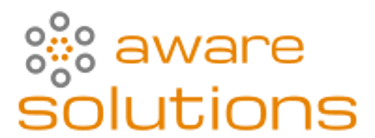Data Governance Framework
Data governance is no longer just about compliance—it’s the backbone of trust, agility, and AI readiness across modern enterprises. This framework outlines how strategic stewardship, automation, and measurable maturity drive real impact from boardroom to backend.
🧭 Vision and Strategic Objectives
Every effective data governance initiative starts with a clearly articulated vision tied directly to business outcomes. Governance isn’t just about compliance—it’s a strategic enabler for trust, agility, and analytics readiness. Organizations should define goals such as improving data quality, ensuring regulatory compliance, reducing risk exposure, and enabling data-driven innovation. These objectives must be mapped to measurable KPIs—for instance, achieving a 5% improvement in customer data accuracy to support targeted marketing and drive a specific revenue uplift.
🏛️ Governance Structure and Roles
Establishing an accountable and scalable governance structure is critical. This includes forming a Data Governance Council composed of executive stakeholders, data owners from business domains, IT leads, and legal/compliance experts. Clearly defined roles—such as Data Stewards, Custodians, and Access Managers—ensure operational continuity. RACI matrices can clarify responsibilities across policy creation, quality monitoring, issue resolution, and enforcement. This structure must be adaptive, scaling with business units and incorporating distributed ownership.
📜 Policies, Standards, and Lifecycle Processes
Policies must be drafted to govern access, privacy, retention, classification, and quality of data. These should be both human-readable and machine-enforceable (“policy as code”), enabling automation across the lifecycle. Lifecycle checkpoints should be established—from creation and validation through transformation and archival. Embedding these policies within workflow tools (e.g., CRMs, cataloging platforms) ensures they’re not just shelfware but living, enforceable standards.
⚙️ Technology Enablement and Automation
Governance is only scalable when it’s tech-enabled. Modern data catalogs (e.g. Alation, Atlan), lineage tools, and access control systems play a central role in operationalizing policies. Automation can enforce tagging, quality thresholds, and role-based access. Metadata enrichment and lineage tracking allow teams to understand dependencies and ensure responsible reuse. Smart dashboards can highlight trust scores, freshness metrics, and anomaly alerts, driving real-time intervention.
🧬 Metadata, Lineage, and Data Quality
Metadata is the connective tissue of governance. Organizations must invest in robust metadata management to catalog definitions, origins, usage patterns, and transformations. Lineage maps help in impact analysis, especially when making schema changes or retiring assets. Quality should be measured using freshness, completeness, consistency, and accuracy scores, with outliers flagged automatically. A ticketing or triage system should capture data incidents and track MTTR (mean time to resolution) to drive accountability.
🛡️ Compliance, Risk, and Audit Controls
Compliance frameworks must be mapped to regulations like GDPR, HIPAA, CCPA, and industry-specific mandates. Audit trails are essential for proving policy enforcement—logging who accessed what, when, and why. Risk management protocols should include breach detection, impact analysis, and data minimization strategies. Regular policy reviews ensure that governance evolves with regulatory changes and emerging risks such as AI model drift or synthetic data misuse.
🙌 Stewardship and Culture of Accountability
Beyond structure and tooling, governance requires cultural adoption. Data stewardship must be embedded into daily workflows, with training and incentives for frontline teams. Naming conventions, business glossaries, and shared taxonomies promote consistency across domains. Champions should be identified across departments to drive bottom-up engagement. Stewardship metrics like policy adherence, resolution speed, and collaboration scores can quantify participation and impact.
📈 Maturity Models and Measurement
Maturity assessment enables continuous improvement. Organizations should use well-defined models (e.g., PwC’s DGF maturity scale or DGI’s 10-component tracker) to benchmark progress across people, process, and technology. Measurement should be multidimensional—tracking policy coverage, issue resolution time, trust scores, and stakeholder satisfaction. Visualizing progress across maturity levels helps stakeholders understand ROI and prioritize investments.
🔖 References to Industry Frameworks
DAMA-DMBOK (Data Management Body of Knowledge): A comprehensive reference with ten areas including architecture, integration, and governance. It’s widely adopted across enterprise and government sectors.
DGI Framework (Data Governance Institute): Offers ten key components from mission and metrics to rules, roles, and processes. Practical and policy-driven.
Latest Trends in Data Governance Frameworks
AI-Embedded Governance
Frameworks now integrate AI to automate metadata classification, policy enforcement, and anomaly detection—reducing manual overhead and enabling real-time governance.Federated & Domain-Driven Models
Inspired by data mesh principles, governance is increasingly decentralized. Business domains own their data products, while central teams provide policy scaffolding and tooling.Governance-as-Code
Policies, access controls, and lineage rules are codified into version-controlled scripts—enabling CI/CD pipelines for governance and reducing drift across environments.Real-Time Governance & Observability
Frameworks support streaming data governance, lineage tracking, and quality scoring in real time—critical for fraud detection, personalization, and operational intelligence.Privacy-First Architecture
Governance frameworks now embed privacy by design, with automated PII detection, encryption policies, and region-aware data residency controls.Unified Governance Across Cloud & Hybrid Estates
Multi-cloud and hybrid environments require frameworks that span AWS, Azure, GCP, and on-prem systems—ensuring consistent policy enforcement and visibility.Outcome-Driven Governance Metrics
Success is measured not just by compliance, but by reduced data prep time, improved analytics delivery, and business impact—tying governance to transformation KPIs.Ethical & Explainable AI Governance
With AI adoption surging, governance frameworks now include fairness audits, model lineage, and explainability protocols to ensure responsible AI use.Data Literacy & Stewardship Enablement
Frameworks emphasize training, stewardship roles, and intuitive tooling to democratize governance and embed it into everyday workflows.Composable Governance Toolkits
Organizations are assembling modular governance stacks—catalogs, lineage engines, policy managers, and observability layers—tailored to their architecture and maturity.
AI-First Consulting Automation to Empower your Business with Data-Driven Transformation.
© 2025. All rights reserved.
Purpose. Presence. Service
